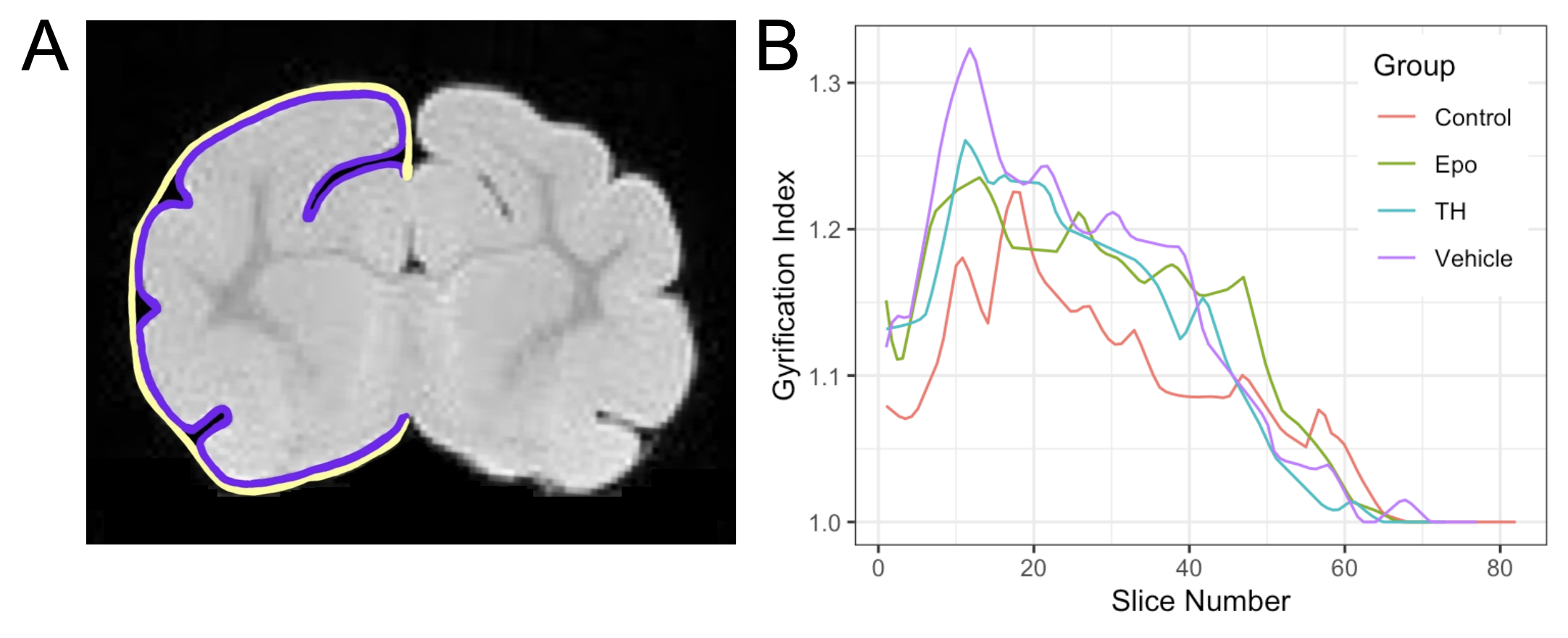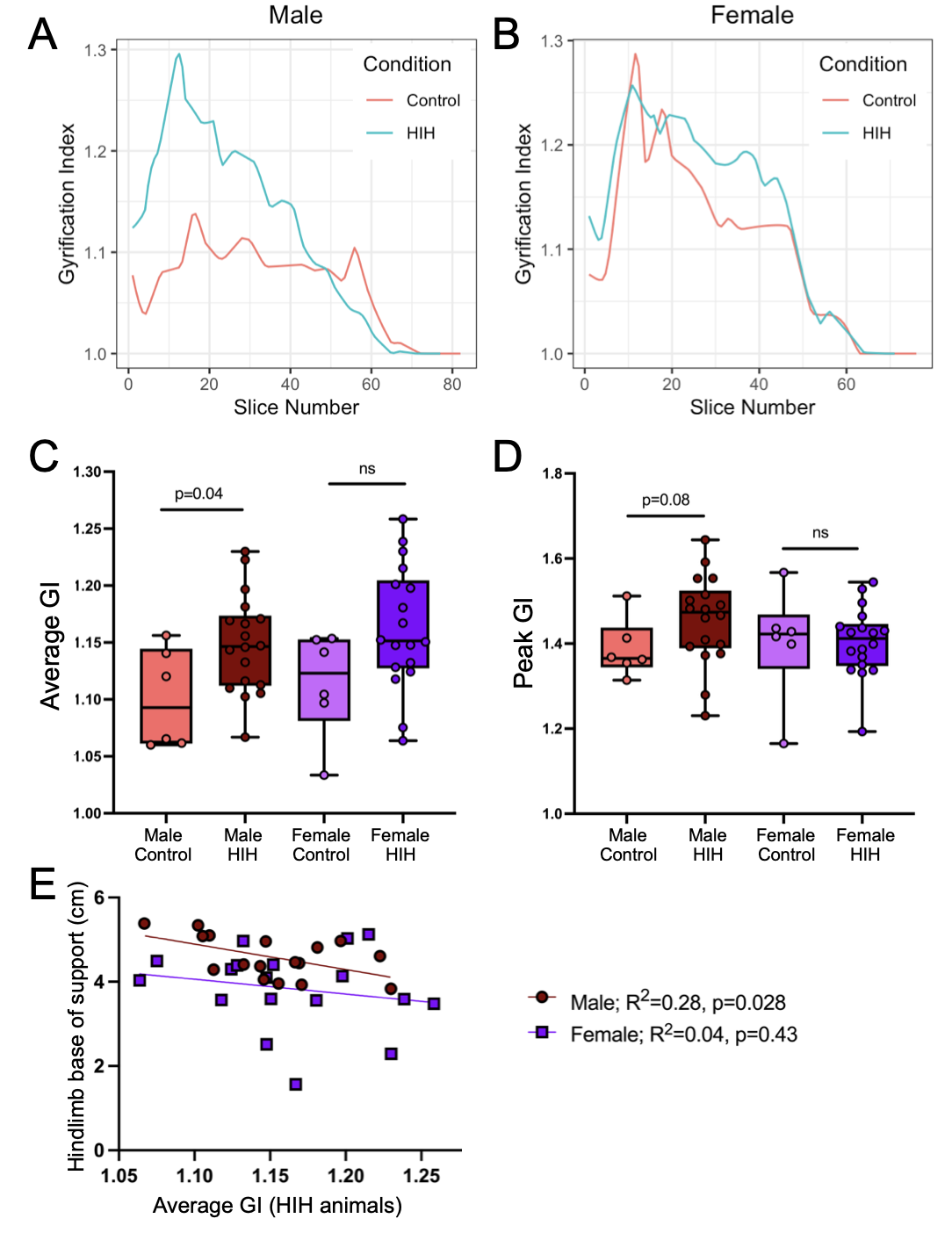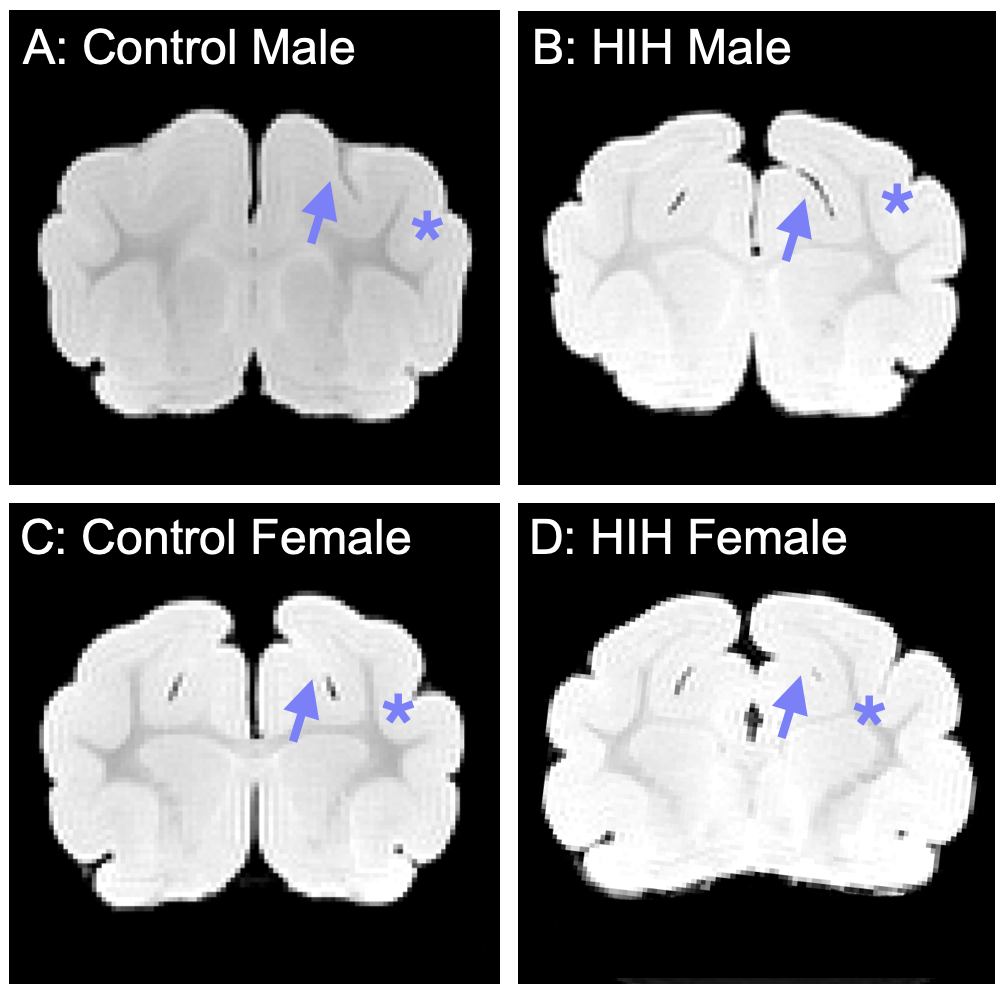Neonatal Neurology: Pre-Clinical Research
Neonatal Neurology 8: Preclinical 2
21 - Effect of Sex on Gyrification in a Ferret Model of Hypoxic-Ischemic Encephalopathy
Publication Number: 21.434

Olivia C. Brandon (she/her/hers)
Student Research Assistant
University of Washington School of Medicine
Seattle, Washington, United States
Presenting Author(s)
Background:
Hypoxic ischemic encephalopathy (HIE) is a leading cause of neonatal morbidity, with altered grey matter development in survivors. In our gyrified ferret model of inflammation-sensitized hypoxia-ischemia (HI), erythropoietin (Epo) but not therapeutic hypothermia (TH) reduces neuropathological injury. The gyrification index (GI) has been proposed as a method to assess cortical development in ferrets, with known sex differences in GI development over time. However, the effect of Epo, TH, and sex on GI after injury is unknown.
Objective:
We evaluated the effects of sex and treatment on post-HI gyrification in a near-term ferret HI model using ex vivo MRI.
Design/Methods:
Postnatal day (P) 17 ferrets received 3mg/kg E. coli lipopolysaccharide and underwent bilateral carotid artery ligation followed by HI with hyperoxia (HIH). HIH-exposed animals were randomized to saline Vehicle (Veh), Epo (4x2,000IU/kg at 0h, 24h, 48h, 7 days), or TH (6h at 33.5°C). Littermate controls were jill separated. Ex vivo MRIs were obtained on P42 after behavioral testing. On each MRI slice (n=60-80 slices per brain), GI was determined by taking a ratio of the outer hemispheric outline to an inner trace that followed the sulci (Fig 1A). Peak GI and average GI were determined for each animal. Outcome comparisons by treatment were compared using Kruskal-Wallis and Mann-Whitney U-tests. In HIH animals, GI was correlated with performance in the automated catwalk.
Results:
N=48 brains were traced for GI (n=6/sex/group). Injury was associated with an increase in GI in all HIH groups (Fig 1B). Among HIH animals, no effect of treatment was seen on peak GI (p=0.68) or average GI (p=0.64), so these were combined for analyses by sex. Differences in GI due to injury appeared to be driven by males (Fig 2A), with HIH males displaying GI values more similar to female animals (Fig 2B). Average GI was significantly increased in male animals only (p=0.04, Fig 2C), with a trend towards increased peak GI also only seen in males (p=0.08, Fig 2D). In males only, average GI was significantly correlated with hindlimb base of support in the catwalk (Fig 2E), which is known to increase with injury in this model. Representative images at peak GI show that control males had shallower frontal sulci, resulting in lower GI than HIH male and female animals (Fig 3).
Conclusion(s):
In our ferret model of HI, GI is notably altered and correlates with motor impairment in male animals only. GI may be an important outcome measure for use in future neuroprotection studies in the ferret, including when examining outcomes by sex.


